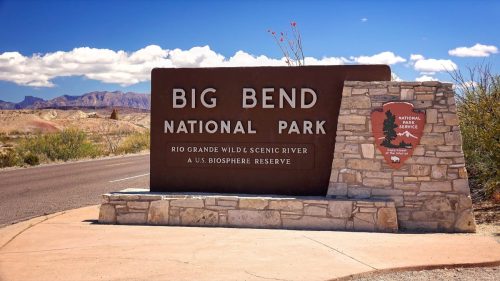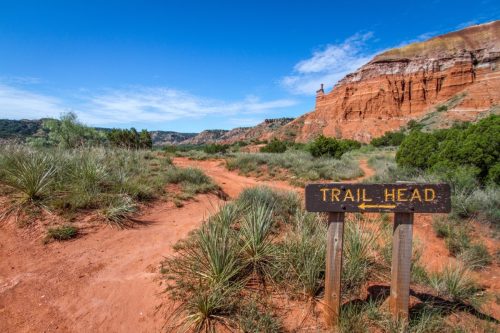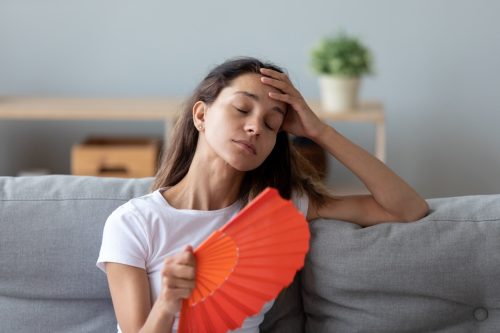14-Year-Old and Stepdad Die From Hiking in Extreme Heat—How to Know If You're in Danger
There are certain warning signs you should be on the lookout for.

Warm weather is one of the best things about the summer season. But when temperatures reach extreme levels, it's vital to consider your personal safety and the safety of your loved ones. According to the Centers for Disease Control and Prevention (CDC), "extreme heat" applies to temperatures that are "much hotter and/or humid than average," which will differ depending on where you live. This kind of heat makes the air feel "oppressive," the agency says—and can lead to heat-related illness and even death.
Just this month, there have been three heat-related fatalities at state and national parks, including a 14-year-old and his stepfather. In light of these tragedies, you should be aware of the telltale signs that you're in danger. Read on to find out what you should do if you find yourself in this situation.
READ THIS NEXT: 18-Year-Old Dies After Sand Dune Collapses on Him—How to Stay Safe at the Beach.
Temperatures reached 119 degrees Fahrenheit at Big Bend National Park.

On Saturday, the National Park Service (NPS) issued a press release confirming two visitor fatalities at Big Bend Nation Park in Texas. The park's communication center received a distress call at 6 p.m. on June 23, with a stepfather and his two stepsons requesting assistance on the Marufo Vega Trail.
There is no shade or water along this specific trail, which is in the hottest part of the park and "dangerous to attempt in the heat of summer," the release states.
The trio was hiking in extreme heat, and even at 6 p.m., the press release notes that temperatures reached 119 degrees Fahrenheit. The 14-year-old teen was unconscious on the trail, and while his stepfather, aged 31, hiked back to his vehicle to find help, the elder son, aged 21, tried to carry his brother back to the trailhead.
When park rangers and U.S. Border Patrol Agents arrived at 7:30 p.m., they found the 14-year-old was deceased. The stepfather was pronounced dead at 8 p.m. after authorities found his vehicle crashed into an embankment.
The surviving son returned to family.

The incident is still under investigation, but VandenBerg told The Washington Post that the 21-year-old son was able to return to family in Florida.
"Our entire park community sends our deep condolences to the family and great appreciation to the dedicated first responders who reached the scene under extreme conditions," Park Information Officer Tom VandenBerg said in the NPS press release.
However, this wasn't an isolated incident, as a 17-year-old boy also died after being rescued from the Lighthouse Trail in Palo Duro Canyon State Park on June 21, Texas Monthly reported. As with the hikers at Big Bend, the teen was hiking in the afternoon, when temperatures reached 103 degrees Fahrenheit.
RELATED: For more up-to-date information, sign up for our daily newsletter.
A heat wave is currently affecting 55 million people.

The CDC reports that there are approximately 618 heat-related fatalities every year, and while fatalities at Big Bend are still fairly rare, they do happen. But even if a hike at a national park isn't on your agenda this summer, you could still be affected by extreme temperatures.
Currently, a dangerous heat wave is overwhelming Texas and Oklahoma, and approaching the Gulf Coast, The New York Times reported. In fact, as of June 27, over 55 million people were affected by some heat advisory, per the outlet's estimates.
Temperatures in Austin, Texas, reached a record 118 degrees last week, with heat-related ambulance calls and emergency room visits also spiking. The "heat dome" is expected to move east and north to affect more states throughout the upcoming holiday weekend, so you'll want to take certain precautions.
Know who's at risk and pay attention to warning signs.

According to the CDC, older adults, very young children, outdoor workers, and people with mental illness and chronic diseases have the highest risk for heat-related illness. Both heat stroke and heat exhaustion occur when the body cannot cool itself the way it typically does by sweating. When your body temperature rises faster than it's able to cool, it can lead to brain and organ damage.
The agency provides a complete list of warning signs for heat stroke, heat exhaustion, and heat cramps, which are the more serious conditions you should be on the lookout for.
Passing out and experiencing confusion, dizziness, and headache are signs of heat stroke, meaning you need to call 911 and try to cool down with a cool cloth or bath. Contrary to what your instincts might tell you, people with heat stroke shouldn't have anything to drink.
For heat exhaustion, you might experience more heavy sweating and muscle cramps, among other symptoms. In this case, you can sip water and move to a cool place. Seek medical attention if you throw up or if your symptoms get worse and last longer than an hour.
Heat cramps symptoms include heavy sweating during exercise and muscle pains or spasms. You should wait for the cramps to pass before starting up again, but seek medical attention if you have cramps lasting longer than an hour, if you have existing heart problems, or if you're on a low-sodium diet, the CDC says.





















